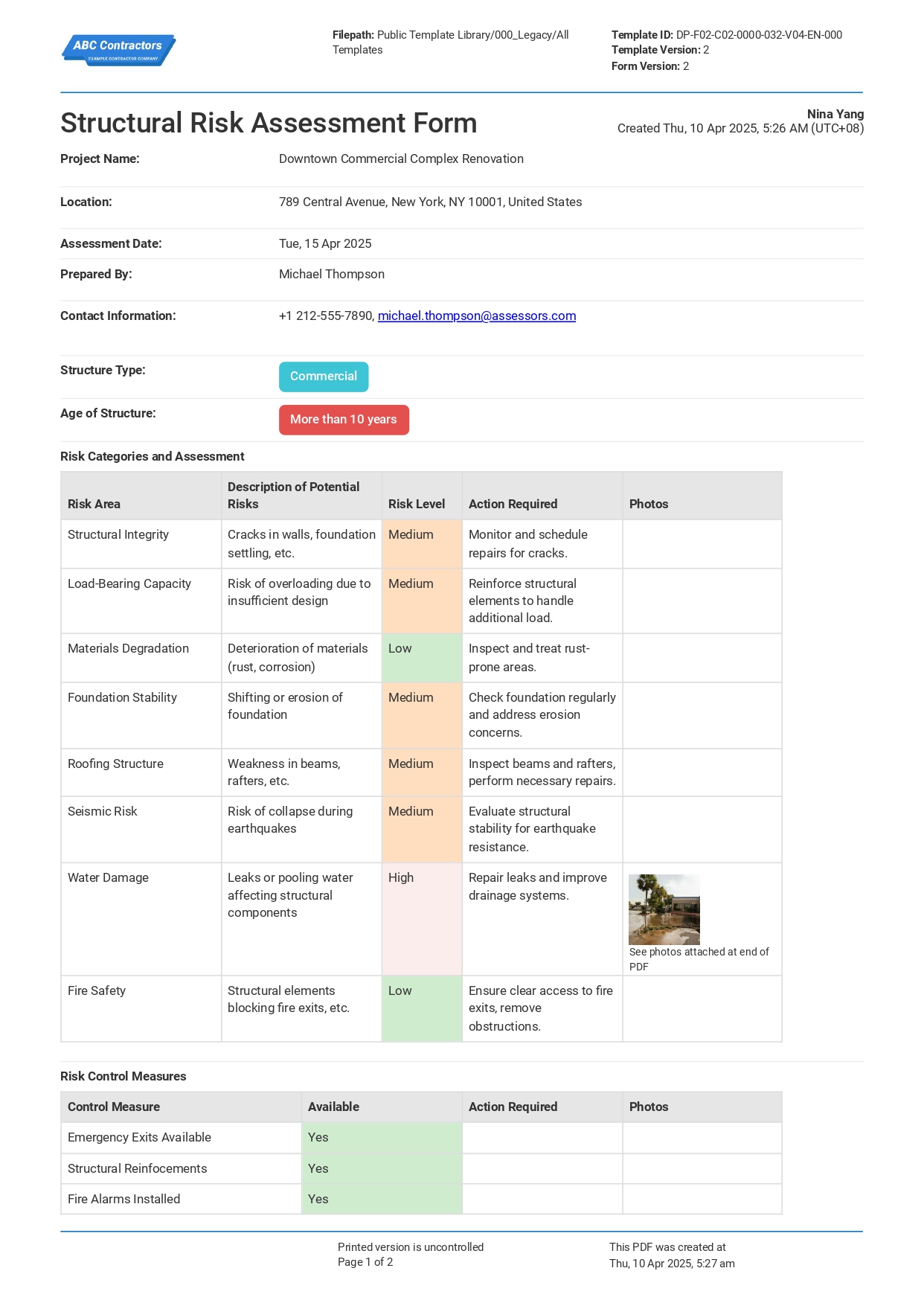Discover the hidden dangers that make buildings liable to collapse, and learn how to protect your property before it’s too late.
Understanding the Hidden Dangers of Structural Failure
The integrity of a building’s structure is paramount to the safety of its occupants and the longevity of the property investment. Recent statistics from the Royal Institution of Chartered Surveyors (RICS) indicate that approximately 15% of UK buildings show signs of potential structural issues. Understanding these hidden dangers is crucial for property owners, as early detection can prevent catastrophic failures and save lives. The combination of ageing infrastructure, with over 40% of UK residential buildings being more than 50 years old, and varying construction standards over the decades creates a perfect storm of potential structural vulnerabilities that demand our attention.
Critical Warning Signs of Potential Structural Failure
- Large Cracks in Walls and Foundations: Particularly those wider than 5mm or that appear suddenly
- Sagging or Uneven Floors: Signs include sloping floors or visible dips in the surface
- Door and Window Misalignment: Doors and windows that stick or won’t close properly
- Unusual Settling Patterns: Including gaps between walls and ceilings
- Visual Signs of Material Deterioration: Such as spalling concrete or rusting reinforcement
Common Causes of Building Structural Failure
Poor Construction Practices
The quality of construction directly impacts a building’s structural integrity. According to the Construction Industry Training Board (CITB), poor workmanship accounts for approximately 35% of structural failures in the UK. Common issues include:
- Use of substandard materials that don’t meet British Standards
- Concrete mixing ratios that fail to achieve required strength
- Incorrect placement or insufficient quantity of reinforcement steel
- Poor formwork leading to concrete segregation or honeycombing
Design and Engineering Issues
Engineering oversights can have devastating consequences. The Institution of Structural Engineers reports that design-related issues contribute to 25% of building failures. Critical factors include:
- Miscalculation of load-bearing capacities
- Omission of essential safety features
- Inadequate foundation design for local soil conditions
- Poor consideration of environmental factors
Environmental and Maintenance Factors
Environmental conditions and lack of maintenance significantly impact structural integrity. In coastal areas of the UK, corrosion-related damage affects up to 20% of buildings. Key environmental factors include:
- Salt air exposure leading to reinforcement corrosion
- Water ingress causing material degradation
- Freeze-thaw cycles affecting masonry
- Ground movement due to changing soil conditions
Legal Implications and Liability
Property owners must understand their legal obligations regarding building safety. Under the Building Safety Act 2022, property owners can face significant fines and even imprisonment for negligence leading to structural failures. Legal responsibilities extend across multiple parties:
- Property owners must maintain safe conditions and regular inspections
- Construction companies bear liability for workmanship quality
- Architects and engineers hold professional indemnity for design accuracy
- Local authorities have enforcement responsibilities for building regulations
Preventive Measures and Professional Assessment
Prevention is always better than cure when it comes to structural integrity. The Building Research Establishment (BRE) recommends comprehensive structural assessments every 5-10 years. Essential preventive measures include:
- Regular structural surveys by qualified professionals
- Documented maintenance schedules and repairs
- Prompt attention to early warning signs
- Professional assessment of any modifications or renovations
Taking Action: Steps to Protect Your Property
When concerns arise about structural integrity, swift action is crucial. Follow these essential steps:
- Immediately evacuate if there are signs of imminent collapse
- Contact a chartered structural engineer for assessment
- Document all issues with photographs and written records
- Implement recommended remedial measures promptly
Expert Guidance and Resources
Accessing professional expertise is crucial for maintaining structural safety. Key resources include:
- The Institution of Structural Engineers’ public directory
- Local authority building control departments
- RICS-registered surveyors
- Specialist structural engineering consultancies
Conclusion: Ensuring Your Building’s Structural Integrity
The safety of your building depends on vigilance, regular maintenance, and prompt professional intervention when needed. With structural failures causing millions in damage annually, the importance of preventive measures cannot be overstated. Don’t wait for obvious signs of collapse – regular inspections and maintenance are your best defence against structural failure. Contact a qualified structural engineer today to assess your property’s condition and ensure its long-term safety and stability.
FAQ
What is the compensation for building collapse?
The kin of those killed in the Bengaluru building collapse is set to receive ₹7 lakh compensation, with Prime Minister Narendra Modi announcing ex-gratia compensation of ₹2 lakh and Chief Minister Siddaramaiah announcing compensation of ₹5 lakh.
Sources
[1] https://engr.charlotte.edu/asce-failure-case-studies/building-failure-cases/
[2] https://santoroandgray.com/building-collapse-liability/
[3] https://ferrarolaw.com/blog/2021/june/what-causes-buildings-to-collapse/


Leave a Reply